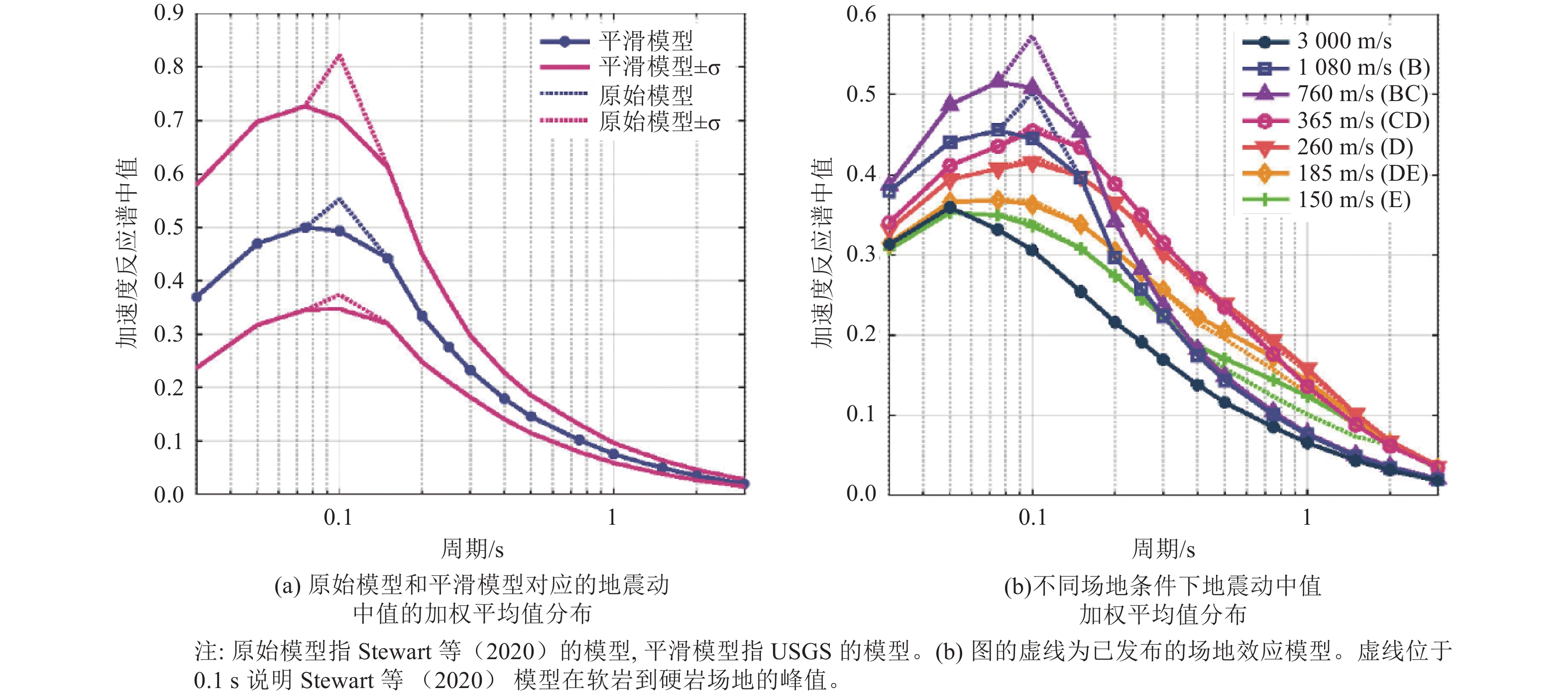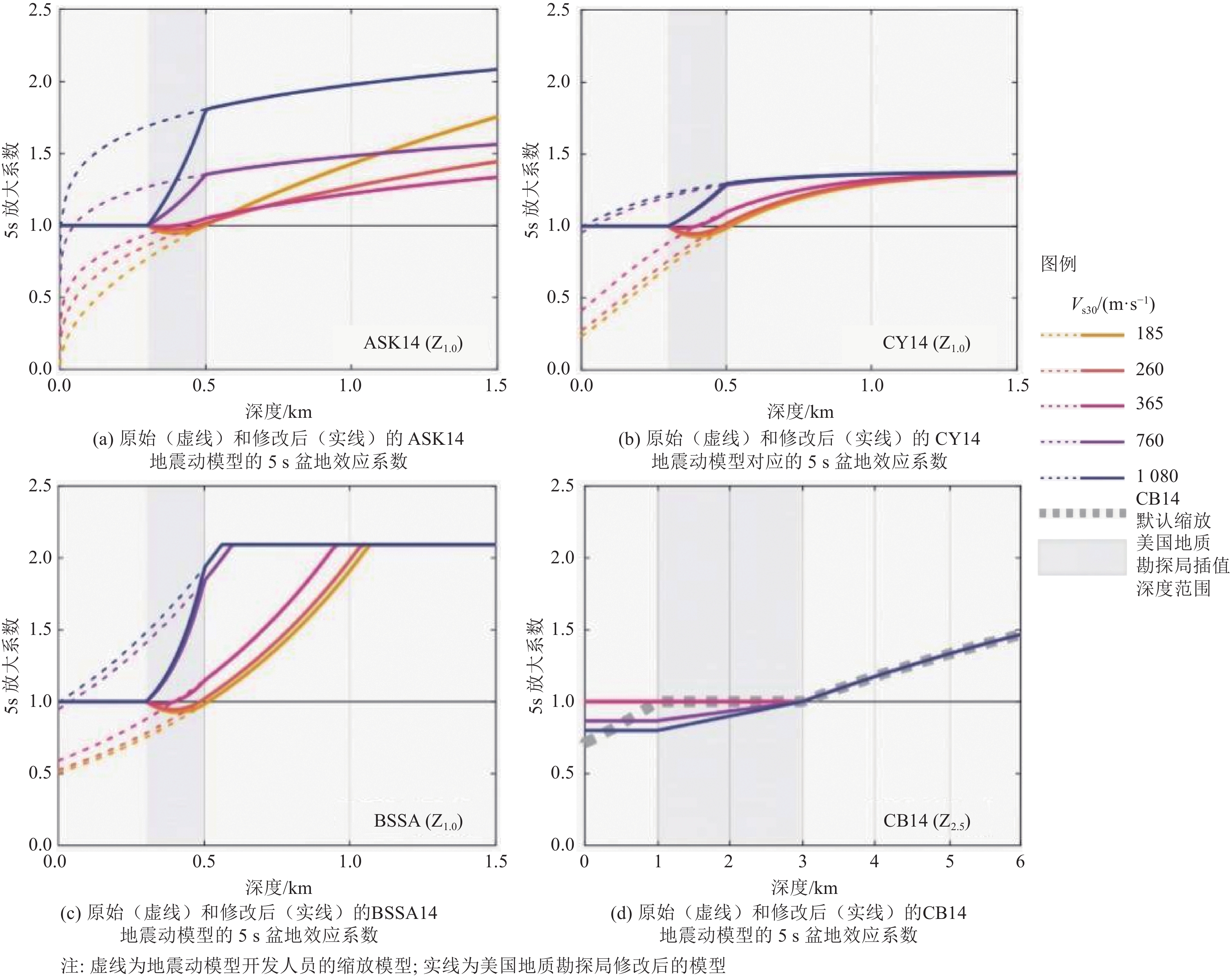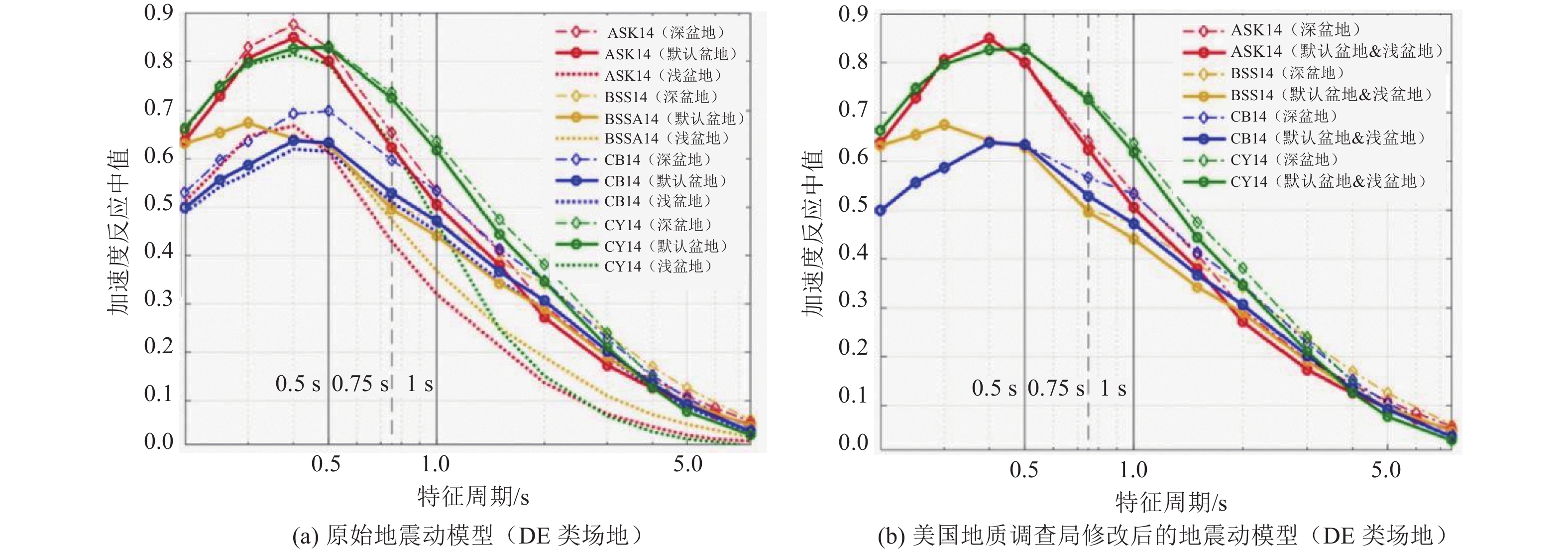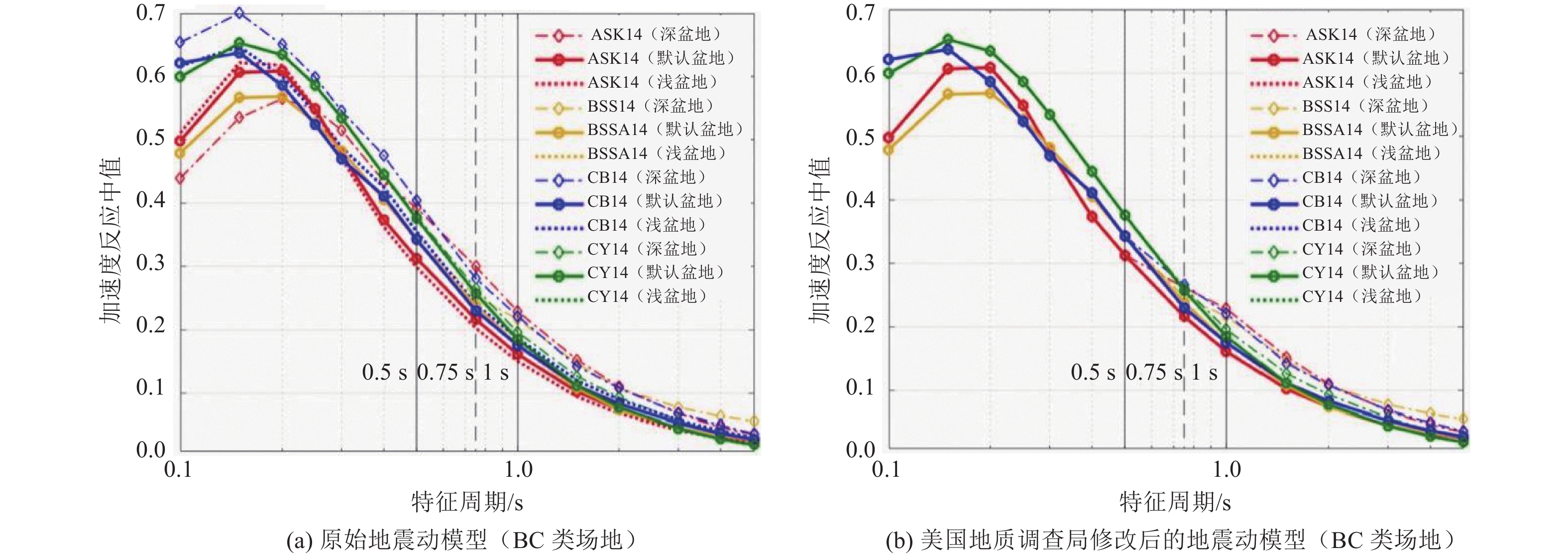State of the Art of Seismic Zonation Map in United States, Site Effect Model and Basin Effect Model
-
摘要: 2018版《美国地震危险性图》对地震动模型美国中部和东部地区地震动场地效应模型及西部地区沉积盆地放大等进行了更新,改善了对美国各地地震灾害的描述,并增强了对美国中部、东部地区与西部地区地震动差异的理解。本文分析并论述了2018版《美国地震危险性图》中美国中部和东部地区地震动场地效应模型及西部地区沉积盆地效应模型的主要特征,对我国新一代地震动区划图的编制、修订进行了思考。Abstract: The 2018 US National Seismic Hazard Model has updated the site effect models of ground motion in the central and eastern United States, and the amplification effect of sedimentary basins in the western United States, improving the description of seismic disasters across the United States and the understanding of ground motion differences between the central and eastern United States and the western United States regions. In this paper, the main characteristics of the site effect models of ground motion in the central and eastern United States and the sedimentary basin effect model in the western United States are analyzed and discussed, which triggers the deliberation of seismic zonation map of next generation in China.
-
图 1 场地放大系数分布情况(Petersen等,2020)
Figure 1. Distribution of site magnification factors (Petersen et al., 2020)
图 2 不同模型、不同场地类别条件下地震动中值加权平均值分布情况(Rezaeian等, 2021)
Figure 2. Comparison of the 2018 GMM medians at original models and smoothed models, a range of site classes (Rezaeian et al., 2021)
图 3 NGA-West2的4个地震动模型在T=5 s时盆地效应系数与盆地深度的关系(Powers等,2021)
Figure 3. The relationship between basin effect coefficient and basin depth at T=5 s for the four ground motion models of NGA-West2 (Powers et al., 2021)
图 4 原始发布和 2018年美国地质勘探局修改后实施的地震动模型在不同盆地深度条件下对应的加速度反应谱中值对比结果(Powers等,2021)
Figure 4. The models as published and the 2018 USGS implementation of the median spectral acceleration at different basin depth conditions(Powers et al., 2021)
图 5 原始发布和 2018年美国地质勘探局修改后实施的地震动模型在不同盆地深度条件下对应的加速度反应谱中值对比结果(Powers等,2021)
Figure 5. The models as published and the 2018 USGS implementation of the median spectral acceleration at different basin depth conditions (Powers et al., 2021)
表 1 场地类别和盆地深度组合(Powers等,2021)
Table 1. Site class and basin-depth combinations for plots ( Powers et al., 2021)
场地类别-盆地 Vs30/(m·s−1) Z1.0/km(ASK14、BSSA14、CY14模型) Z2.5/km(CB14模型) BC类-默认盆地($ {V}_{\mathrm{s}30} $-基础) 760 (0.048,0.041,0.041) 0.607 BC类-深盆地(长滩) 760 (0.704,0.704,0.704) 3.830 BC类-浅盆地(旧金山) 760 (0.025,0.025,0.025) 0.850 DE类-默认盆地($ {V}_{\mathrm{s}30} $-基础) 185 (0.497,0.513,0.513) 3.060 DE类-深盆地(长滩) 185 (0.704,0.704,0.704) 3.830 DE类-浅盆地(旧金山) 185 (0.025,0.025,0.025) 0.850 -
中华人民共和国住房和城乡建设部, 中华人民共和国国家质量监督检验检疫总局, 2010. GB 50011—2010 建筑抗震设计规范. 北京: 中国建筑工业出版社, 18—20Ministry of Housing and Urban-Rural Development of the People’s Republic of China, General Administration of Quality Supervision, Inspection and Quarantine of the People’s Republic of China, 2010. GB 50011—2010 Code for seismic design of buildings. Beijing: China Architecture & Building Press, 18—20. (in Chinese) 周健, 李小军, 李亚琦等, 2021. 中美建筑抗震设计规范中工程场地类别的对比和换算关系. 地震学报, 43(4): 521—532 doi: 10.11939/jass.20200164Zhou J. , Li X. J. , Li Y. Q. , et al. , 2021. Comparative analysis and transformation relations between China and the US site classification systems in building seismic code provisions. Acta Seismologica Sinica, 43(4): 521—532. (in Chinese) doi: 10.11939/jass.20200164 Aagaard B. T. , Brocher T. M. , Dolenc D. , et al. , 2008. Ground-motion modeling of the 1906 San Francisco earthquake, part II: ground-motion estimates for the 1906 earthquake and scenario events. Bulletin of the Seismological Society of America, 98(2): 1012—1046. doi: 10.1785/0120060410 Abrahamson N. A. , Silva W. J. , Kamai R. , 2014. Summary of the ASK14 ground motion relation for active crustal regions. Earthquake Spectra, 30(3): 1025—1055. doi: 10.1193/070913EQS198M Algermissen S. T., Perkins D. M., 1976. A probabilistic estimate of maximum acceleration in rock in the contiguous United States. Reston: U. S. Geological Survey. Algermissen S. T., Perkins D. M., Thenhaus P. C., et al., 1990. Probabilistic earthquake acceleration and velocity maps for the United States and Puerto Rico. Reston: U. S. Geological Survey. Atkinson G. M. , Boore D. M. , 2008. Erratum to empirical ground-motion relations for subduction zone earthquakes and their application to Cascadia and other regions. Bulletin of the Seismological Society of America, 98(5): 2567—2569. doi: 10.1785/0120080108 Atkinson G. M. , Boore D. M. , 2011. Modifications to existing ground-motion prediction equations in light of new data. Bulletin of the Seismological Society of America, 101(3): 1121—1135. doi: 10.1785/0120100270 Boore D. M. , Stewart J. P. , Seyhan E. , et al. , 2014. NGA-West2 equations for predicting PGA, PGV, and 5% damped PSA for shallow crustal earthquakes. Earthquake Spectra, 30(3): 1057—1085. doi: 10.1193/070113EQS184M Campbell K. W. , Bozorgnia Y. , 2014. NGA-West2 ground motion model for the average horizontal components of PGA, PGV, and 5% damped linear acceleration response spectra. Earthquake Spectra, 30(3): 1087—1115. doi: 10.1193/062913EQS175M Chiou B. S. J. , Youngs R. R. , 2014. Update of the Chiou and Youngs NGA model for the average horizontal component of peak ground motion and response spectra. Earthquake Spectra, 30(3): 1117—1153. doi: 10.1193/072813EQS219M Frankel A. , Wirth E. , Marafi N. , et al. , 2018. Broadband synthetic seismograms for magnitude 9 earthquakes on the Cascadia megathrust based on 3 D simulations and stochastic synthetics, part 1: methodology and overall results. Bulletin of the Seismological Society of America, 108(5 A): 2347—2369. doi: 10.1785/0120180034 Frankel A. D., Mueller C. S., Barnhard T. P., et al., 1996. National seismic-hazard maps: documentation June 1996. Reston: U. S. Geological Survey. Frankel A. D. , Carver D. L. , Williams R. A. , 2002 a. Nonlinear and linear site response and basin effects in Seattle for the M 6.8 Nisqually, Washington, earthquake. Bulletin of the Seismological Society of America, 92(6): 2090—2109. doi: 10.1785/0120010254 Frankel A. D., Petersen M. D., Mueller C. S., et al., 2002 b. Documentation for the 2002 update of the national seismic hazard maps. Reston: U. S. Geological Survey. Goulet C. A., Bozorgnia Y., Abrahamson N., et al., 2018. Central and eastern North America ground-motion characterization-NGA-east final report. Berkeley: Pacific Earthquake Engineering Research Center. Graves R. , Jordan T. H. , Callaghan S. , et al. , 2011. CyberShake: a physics-based seismic hazard model for southern California. Pure and Applied Geophysics, 168(3—4): 367—381. doi: 10.1007/s00024-010-0161-6 Hartzell S. , Cranswick E. , Frankel A. , et al. , 1997. Variability of site response in the Los Angeles urban area. Bulletin of the Seismological Society of America, 87(6): 1377—1400. doi: 10.1785/BSSA0870061377 Hashash Y. M. A. , Ilhan O. , Harmon J. A. , et al. , 2020. Nonlinear site amplification model for ergodic seismic hazard analysis in central and eastern North America. Earthquake Spectra, 36(1): 69—86. doi: 10.1177/8755293019878193 Idriss I. M. , 2014. An NGA-West2 empirical model for estimating the horizontal spectral values generated by shallow crustal earthquakes. Earthquake Spectra, 30(3): 1155—1177. doi: 10.1193/070613EQS195M Moschetti M. P. , Hartzell S. , Ramírez-Guzmán L. , et al. , 2017. 3 D Ground-motion simulations of Mw7 earthquakes on the Salt Lake City segment of the Wasatch fault zone: variability of long-period (T≥1 s) ground motions and sensitivity to kinematic rupture parameters. Bulletin of the Seismological Society of America, 107(4): 1704—1723. Pacific Earthquake Engineering Research Center (PEER), 2015. NGA-east: adjustments to median ground-motion models for central and eastern North America. Berkeley: Pacific Earthquake Engineering Research Center. Petersen M. D., Frankel A. D., Harmsen S. C., et al., 2008. Documentation for the 2008 update of the United States national seismic hazard maps. Reston: U. S. Geological Survey. Petersen M. D., Moschetti M. P., Powers P. M., et al., 2014. Documentation for the 2014 update of the United States national seismic hazard maps. Reston: U. S. Geological Survey. Petersen M. D. , Shumway A. M. , Powers P. M. , et al. , 2020. The 2018 update of the US national seismic hazard model: overview of model and implications. Earthquake Spectra, 36(1): 5—41. doi: 10.1177/8755293019878199 Petersen M. D. , Shumway A. M. , Powers P. M. , et al. , 2021. The 2018 update of the US national seismic hazard model: where, why, and how much probabilistic ground motion maps changed. Earthquake Spectra, 37(2): 959—987. doi: 10.1177/8755293020988016 Powers P. M. , Rezaeian S. , Shumway A. M. , et al. , 2021. The 2018 update of the US national seismic hazard model: ground motion models in the western US. Earthquake Spectra, 37(4): 2315—2341. doi: 10.1177/87552930211011200 Rezaeian S. , Powers P. M. , Shumway A. M. , et al. , 2021. The 2018 update of the US national seismic hazard model: ground motion models in the central and eastern US. Earthquake Spectra, 37(S1): 1354—1390. Shumway A., Petersen M. D., Powers P. M., et al., 2018. Additional period and site class maps for the 2014 national seismic hazard model for the conterminous United States. Reston: U. S. Geological Survey. Stephenson W. J. , Frankel A. D. , Odum J. K. , et al. , 2006. Toward resolving an earthquake ground motion mystery in west Seattle, Washington State: shallow seismic focusing may cause anomalous chimney damage. Geophysical Research Letters, 33(6): L06316. Stewart J. P. , Parker G. A. , Atkinson G. M. , et al. , 2020. Ergodic site amplification model for central and eastern North America. Earthquake Spectra, 36(1): 42—68. doi: 10.1177/8755293019878185 -



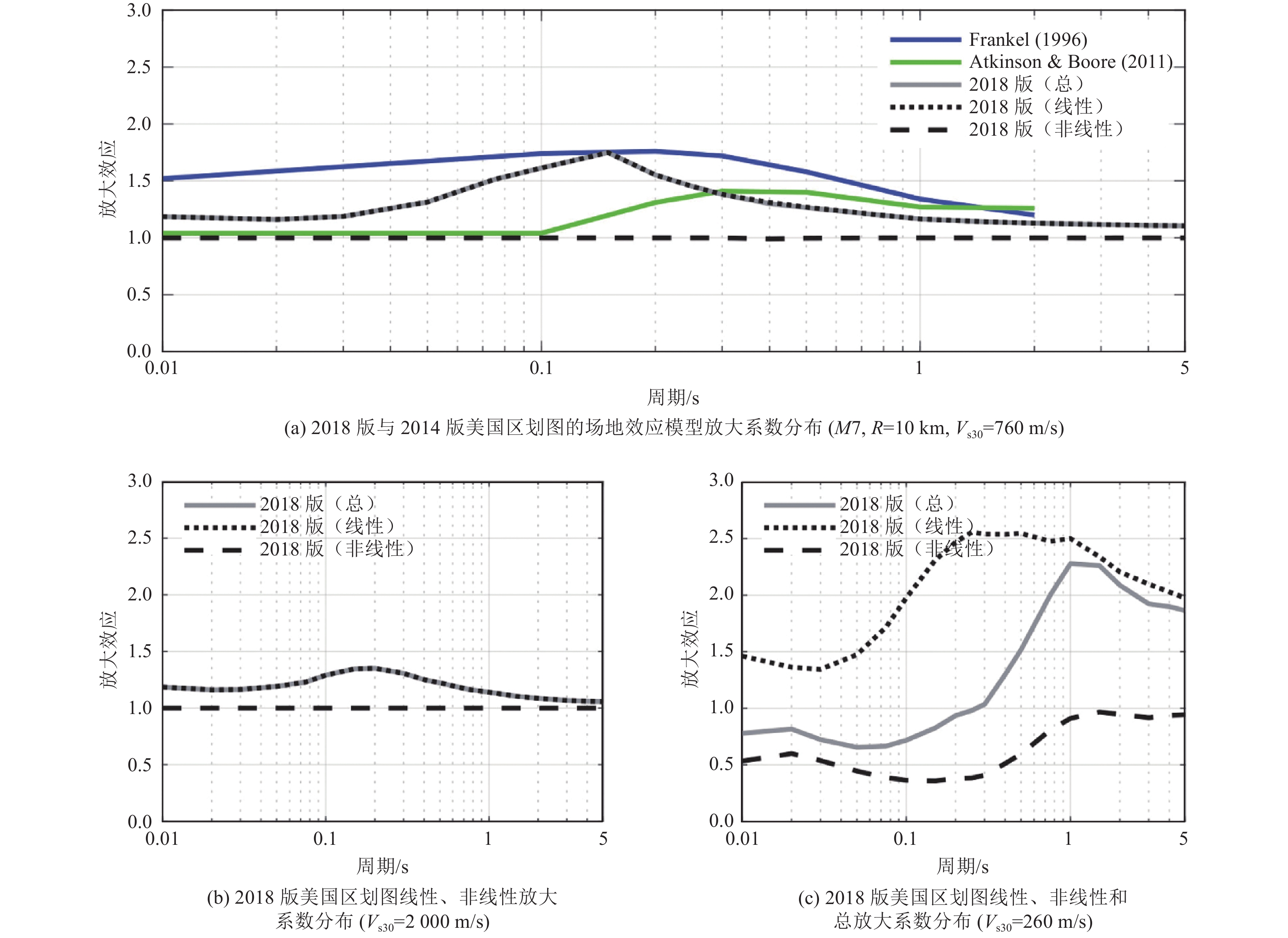
 下载:
下载:
